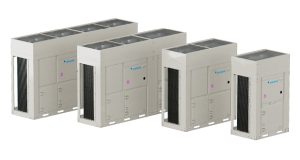 By Professor Martin Green OBE an Expert Advisory Council member for P&G Professional and the Chief Executive of Care England
By Professor Martin Green OBE an Expert Advisory Council member for P&G Professional and the Chief Executive of Care England
Health and social care providers are facing one of the biggest challenges in a generation, with not only a general cost of living crisis having a significant impact on their viability, but an enormous increase in energy costs is putting unparalleled strain on the entire sector. Social care is an energy-intensive sector, and we must use significant energy to deliver high-quality care. Whilst we acknowledge that the Government has offered some support, this is time-limited, and it in no way takes account of the enormous increases in energy costs that we have seen over the last six months.
Some care services have had up to 600 per cent increases in their energy bills. Unlike the retail or hospitality sectors, we cannot decide to close for two days a week or turn our heating down a few degrees because we are in a regulated industry. We support some of the most vulnerable people who need heat to survive.
There are many reasons why care homes have much higher levels of energy consumption than other sectors of the economy. As well as the need to heat the buildings to higher temperatures than would be necessary and other sectors, there are also the huge costs of running specialist equipment, which takes a great deal of energy. One of our primary areas for energy consumption is associated with cleaning. The constant need to wash clothes, bed linen, towels, and a range of other vital laundry, takes enormous amounts of energy. Cleaning the care environments to the highest possible standard is also necessary to ensure that residents are protected, and services comply with the regulator’s requirements.
To meet the challenges of maintaining a safe service whilst at the same time, doing what they can to reduce energy costs has been a constant focus for care providers during these last difficult months, with energy and other expenses rising steeply. We have seen many services develop energy-saving measures, and simple things such as moving to LED lighting and economy seven tariffs have impacted the cost of running a care service. In the longer term, many care homes are starting to think about renewable energy and how they can secure an energy supply that is both environmentally friendly and reasonably priced and enables them to generate income by selling surplus energy to the National Grid. Of course, all these initiatives are much more long-term and require a significant amount of inward investment.
One area where care providers can make some instant savings, whilst at the same time assuring themselves of quality and safety, is through using products which are proven to be effective in delivering a hygienic and compliant outcome. Some fantastic products, such as Ariel Professional, are adapted from domestic brands to meet the needs of care services and ensure that laundry is as clean as possible, even when you use low temperatures or short cycles to wash clothes and other items. In fact, Ariel Professional is proven to work exceptionally, even at 30 degrees and can save up to 40 per cent on washing energy bills. In turn, saving money as well as conserving energy. There are also some excellent products, such as Flash Professional, that can be used in general cleaning regimes, and providers can be assured that these products will deliver to the highest standards of cleanliness and germ control, with the minimum energy requirements, and little specialist knowledge or training needed in how to use the product.
For care providers, this is a very difficult time, and many options are available to reduce their energy consumption. However, one of the easiest and best ways they can make some immediate savings is to look at the products that they are using and make sure that there is a tried and tested approach to hygiene and cleanliness as well as an opportunity to use products that will still be effective at lower temperatures or ensure maximum protection for residents and staff.




